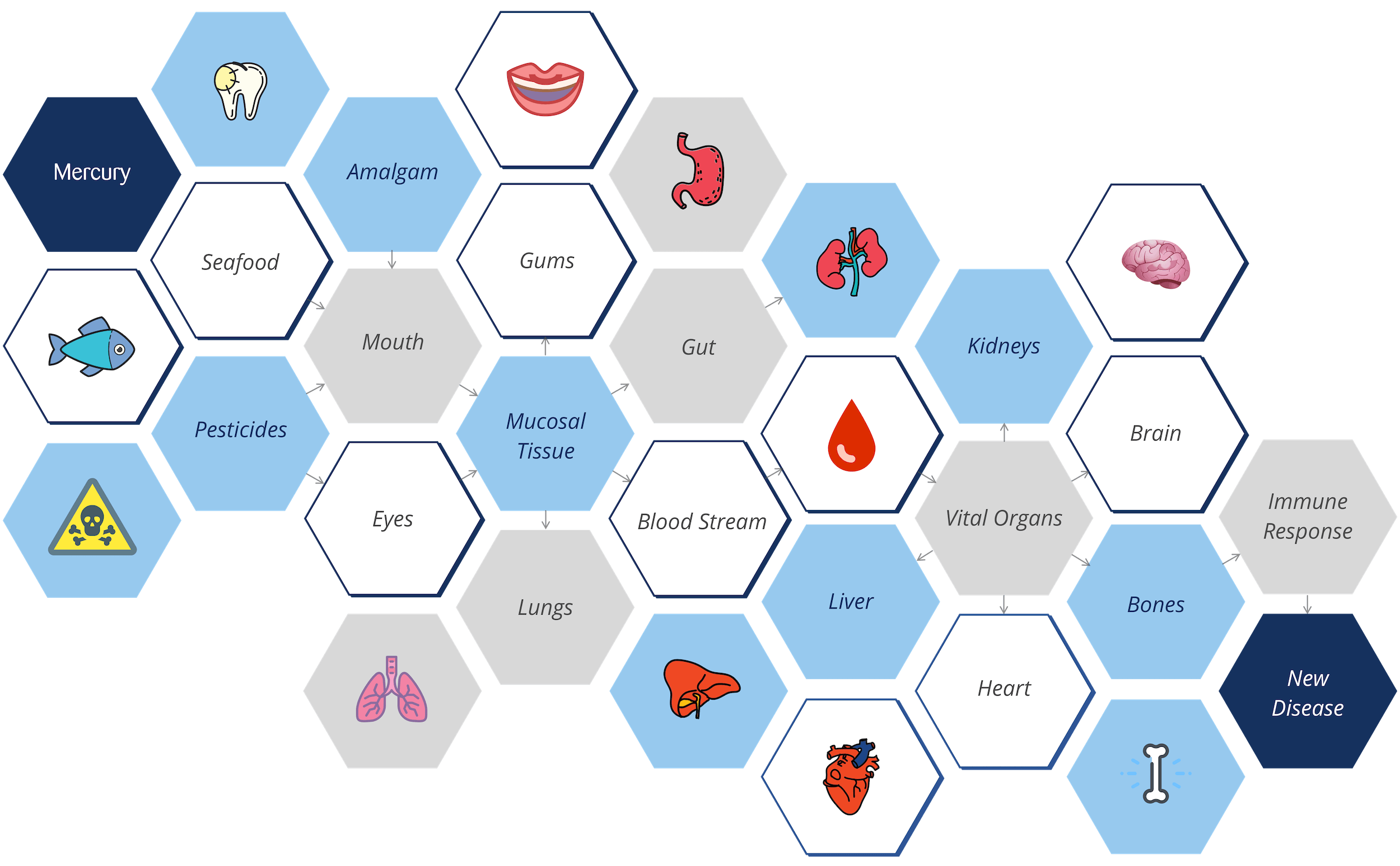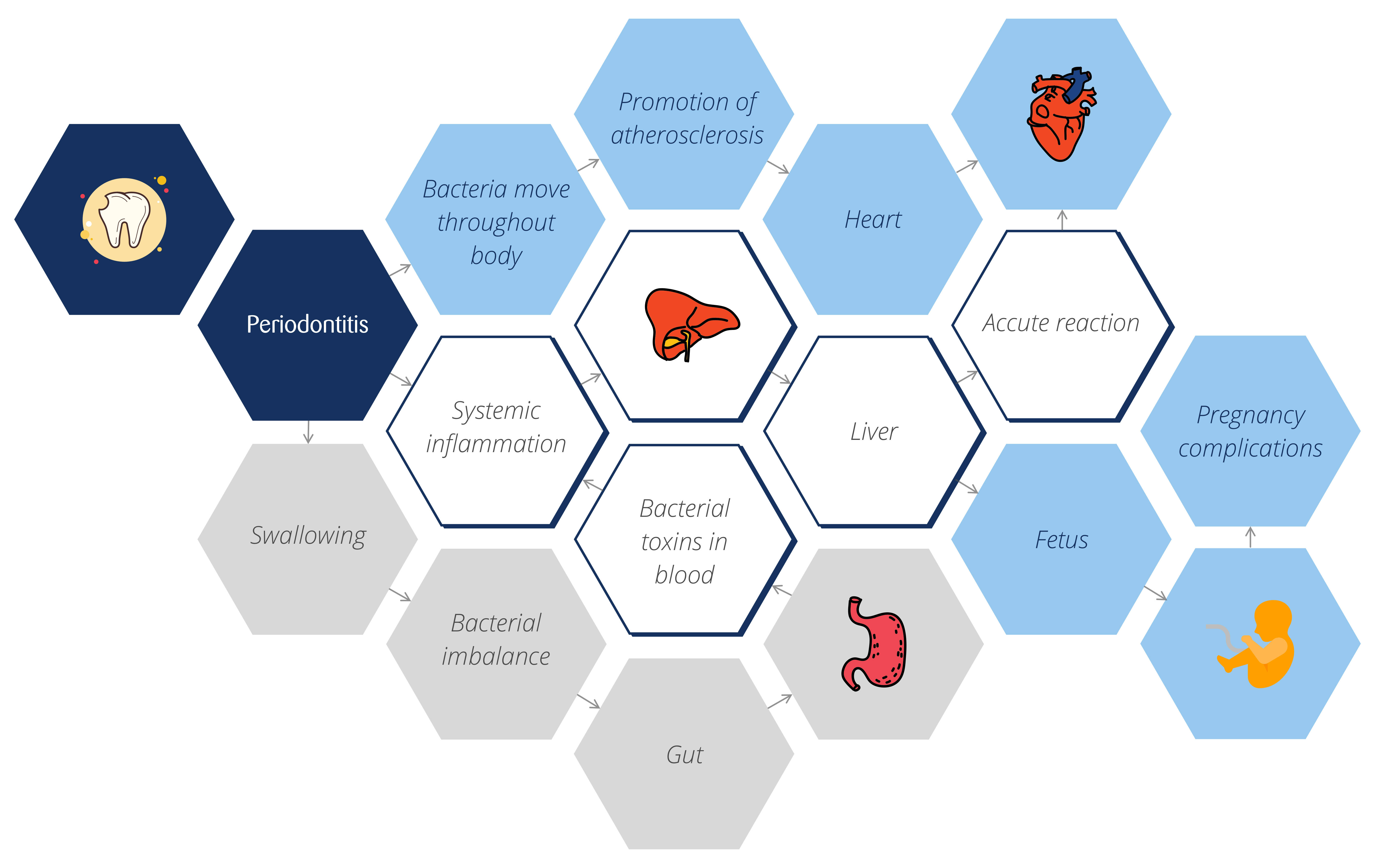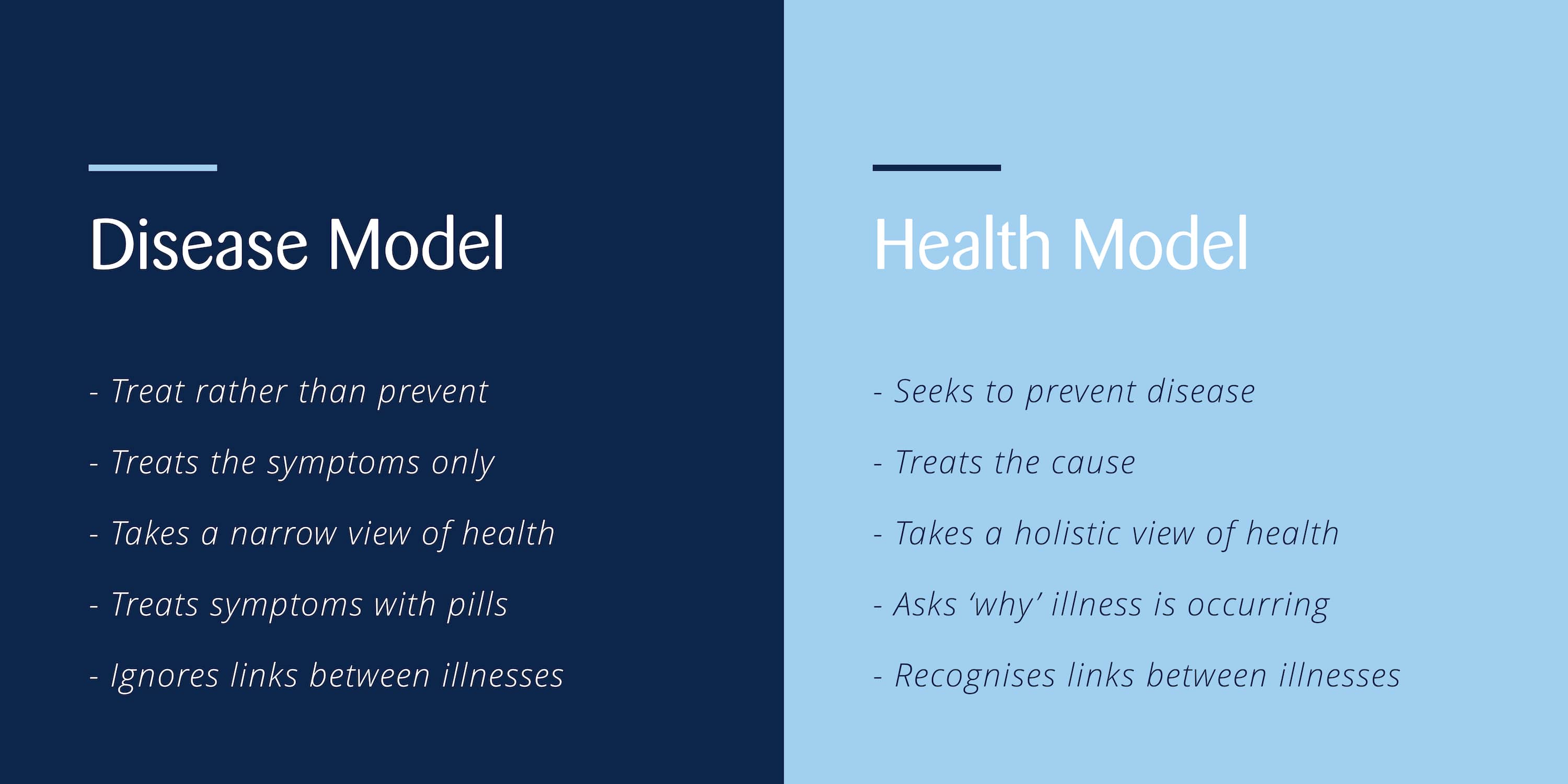Disease Starts in the Mouth
Modern medicine tends to think of dentistry and disease as being in two different realms. Because we silo dentistry and disease in this way,
most people aren’t aware of the ‘oral systemic link’. The oral systemic link is the unique relationship between oral
health and total body health that suggests the earliest signs of disease are evident in the mouth - what we call ‘a mouth full of
evidence’.
The Oral Systemic Link
Though the oral systemic link remains a foreign concept to most people, it has been known since the early 1900s and is highlighted in a
guest editorial in the Journal of Dental Research. This uniquely intertwined relationship between dentistry and disease is perhaps best
highlighted in a 2013 study that assessed patients who suffered from stroke or heart attack. It conducted PCR (polymerase chain reaction)
DNA testing on the bacteria that caused the clots resulting in stroke and heart attack. In every case - 100% of the time - the clot-causing
bacteria was proven to have come from oral sources. This is the oral systemic link. It shows that the mouth and the rest of the body are
intertwined - what happens in the mouth impacts the entire body.
This is especially true of mercury - which starts in the mouth as amalgam. But as mercury vapour is released over time, mercury makes its way into the gut, liver, kidney and brain. As mercury moves from the mouth to other parts of the body, it often manifests itself in various physical and mental disturbances. Due to the lack of awareness around the oral systemic link, many of these illnesses and conditions caused by mercury toxicity are not linked with it and are subsequently mistreated or misdiagnosed. What’s more, even if mercury toxicity is diagnosed correctly, the most common practice is simply removing the amalgam fillings. This, however, does nothing more than cut off the supply - it does nothing to rid the body of the mercury stored in the gut, liver, kidney and brain. This is highlighted particularly well by a 1989 study conducted on sheep and monkeys. The results showed that 29 days after having their amalgams removed, the animals remained burdened by mercury stored in their body. The diagram below shows how mercury can catalyse a secondary immune response and create new diseases and conditions.

How are The Mouth and Body Linked?
So how are the mouth and body linked? Well, the mouth is essentially an entry point or gateway to the entire body. It is the primary entry
point for bacteria, viruses and toxins. Once they’re in the mouth, they can be absorbed directly into the bloodstream and then travel
throughout the body. The diagram below shows how gum disease can affect total body health.

Disease Model Thinking
This begs the question; why is the oral systemic link so profound yet so widely unknown? That likely has a lot to do with the framework of
modern medicine, which subscribes to the philosophy of ‘disease model’ thinking. Disease model thinking is essentially the
practice of diagnosing conditions and prescribing treatment to cure it. Disease model thinking rarely seeks to prevent disease, nor does it
ask why disease is occurring. This is because the disease model defines health as the absence of disease. This line of thinking means that
linkages between diseases, symptoms and conditions are often not found - as is particularly common with mercury and other toxicities.
Highlighting the relationship between toxicity and disease, Dr. Dietrich Klinghardt once famously said that “Most, if not all, chronic infectious diseases are not caused by a failure of the immune system, but are a conscious adaptation of the immune system to an otherwise lethal heavy metal environment”.

Health Model Thinking
By contrast, Eric Davis Dental subscribes to a philosophy of ‘health model’ thinking. Health model thinking seeks to prevent
disease rather than cure it, and in the incidence of disease, it aims to uncover why disease is occurring and correct the cause - not merely
treat the symptoms. The health model believes that disease is a symptom of a chemical imbalance that can be identified and corrected. It
also acknowledges the complex links between different symptoms and conditions.
The oral systemic link is guided by health model thinking. It acknowledges that what happens in the mouth can often be felt in other parts of the body and vice versa. The oral systemic link believes the body is an interconnected whole, and, as such, treats it holistically. Dr Eric Davis himself has spoken at length on the oral systemic link throughout his career. In 2017, he delivered a presentation on the subject at the Integria Health Symposium. Watch the full video below.
